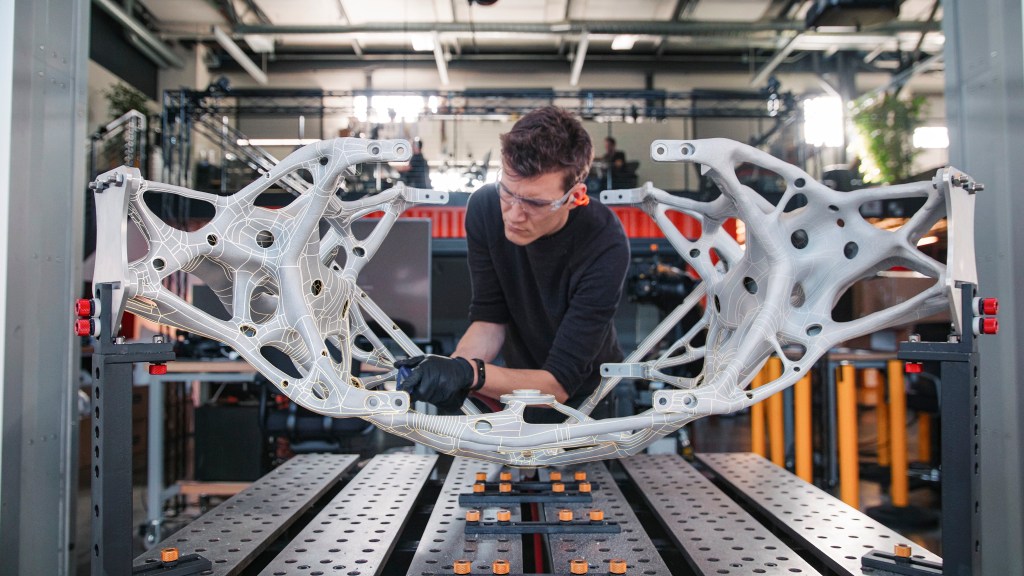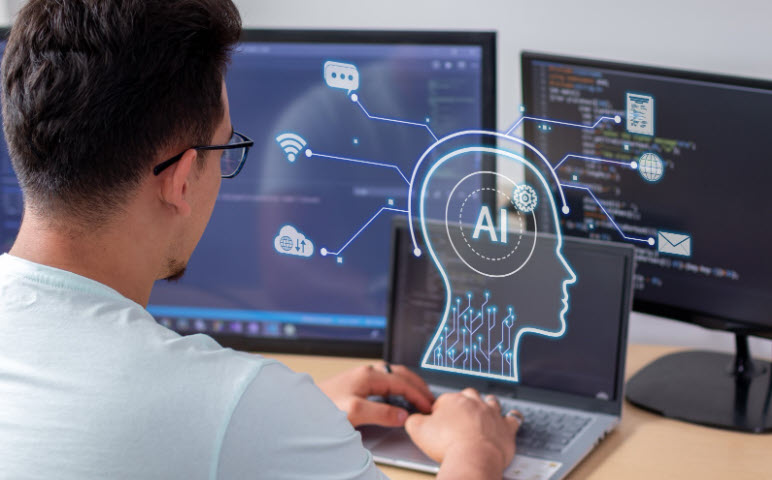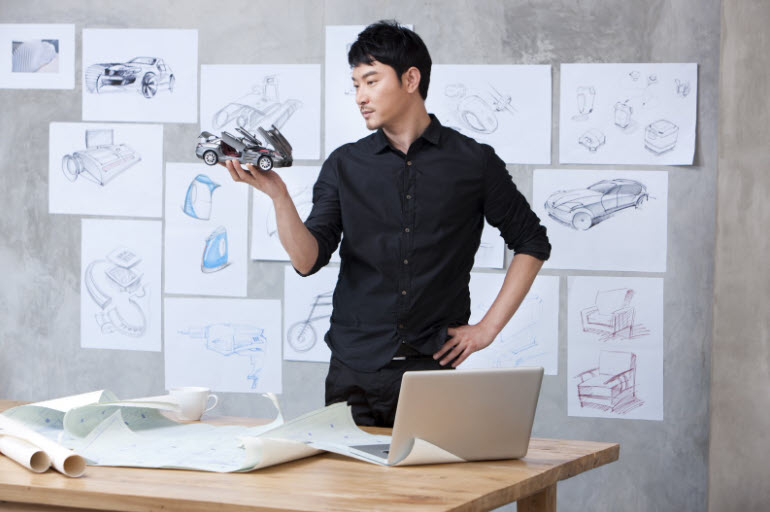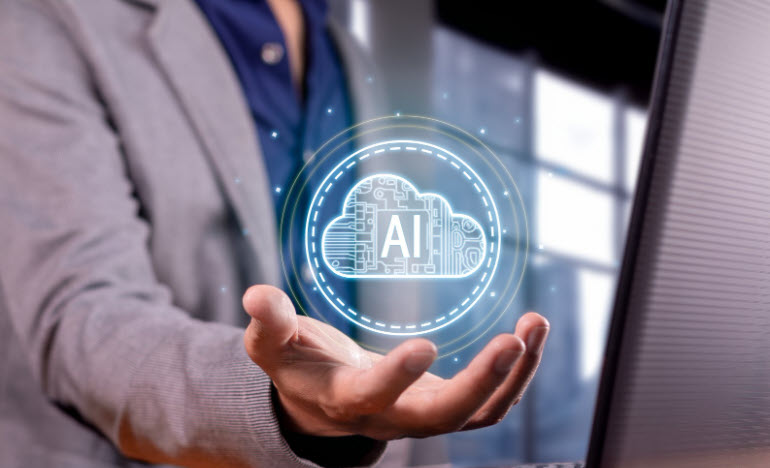& Construction

Integrated BIM tools, including Revit, AutoCAD, and Civil 3D
& Manufacturing

Professional CAD/CAM tools built on Inventor and AutoCAD
6 min read
This article covers the advantages of AI for product design, explores applications across industries, and addresses ethical considerations.
In an era where the fusion of artificial intelligence (AI) and product development is revolutionizing how we conceive and create products, the potential to harness AI for product design has become an essential facet of innovation. Integrating AI in the design process is not just a trend but a profound shift towards digital transformation. It leads to more efficient, accurate, and customer-centric product development.

From predictive testing to generative design, AI is reshaping the landscape of product design by offering tools that can predict consumer needs, optimize functionality, and accelerate the prototyping phase, all while reducing costs and time to market. This transformative approach is especially evident in sectors like consumer electronics, where the demand for rapid innovation is high.
This article dives deep into the advantages of AI for product design efficiency, explores transformative AI applications across various industries, and tackles the challenges and ethical considerations inherent in AI-driven design.

AI-driven tools significantly streamline the design process by automating repetitive tasks, which allows you, as a designer, to focus on more complex and creative aspects of product development. For instance, AI can automate the resizing and color correction of images, which, while necessary, does not require deep creative input.
During product development, tools like drawing automation save significant time by automating the tedious steps of creating an engineering drawing.
Leveraging AI during rapid prototyping accelerates the development cycle by quickly generating options without extensive manual input. This capability sets the groundwork for the prototype and testing phases by providing a starting point.
Additionally, AI-driven A/B testing automates the comparison of different design versions, helping you quickly determine the most effective design before it goes to market.
AI excels in delivering personalized experiences to users by analyzing large datasets to understand consumer behaviors and preferences. This analysis leads to highly targeted product recommendations and customized user experiences, increasing customer satisfaction and engagement.
For example, AI-powered personalization engines can adjust user interfaces in real time to match individual preferences, significantly enhancing the user experience and increasing the likelihood of conversion.
AI is revolutionizing aerospace design by empowering engineers to create lighter, stronger, and more aerodynamic structures. Generative design and automated modeling in Autodesk Fusion, for example, can rapidly explore thousands of design options, optimizing for specific parameters like weight, strength, and fuel efficiency. This leads to innovative designs that were previously unimaginable or too time-consuming to develop manually.

Artificial Intelligence (AI) is revolutionizing the automotive industry in numerous ways. AI-powered systems enhance vehicle safety through advanced driver-assistance systems (ADAS) that detect and respond to potential hazards in real time. Additionally, AI plays a crucial role in autonomous vehicles, with self-driving cars becoming increasingly sophisticated and advancing to widespread adoption.
Within manufacturing, AI-driven robots and automation are streamlining production processes, leading to increased efficiency and cost savings. Furthermore, AI can help optimize supply chains and predict maintenance needs, ultimately transforming how vehicles are designed and manufactured.
AI has transformed many consumer products by making devices more intuitive and personalized. Smart home automation systems powered by AI allow for seamless control of home environments, enhancing convenience and energy efficiency. In personal electronics, AI-driven voice assistants and facial recognition technologies have become central to user interaction, offering a more personalized and secure experience. AI also supports predictive maintenance, which extends the lifespan of devices and ensures their reliability.
While powerful, AI systems often reflect the biases in their training data. These biases can manifest in various forms, such as gender, race, and socioeconomic status, leading to discriminatory outcomes across multiple sectors, notably the hiring process. To mitigate these issues, conducting regular audits and integrating bias detection tools is crucial to ensure AI algorithms function without perpetuating or creating new forms of discrimination.
Transparency in AI involves clear communication about how AI systems operate and make decisions. This is crucial for building trust and accountability, especially in sectors like finance and healthcare, where decisions significantly impact individuals’ lives. Explainability goes further by making these processes understandable to non-experts, ensuring that users can comprehend and challenge AI decisions if necessary. Regulations play a vital role in enforcing standards for transparency and explainability, requiring regular audits and precise documentation of AI systems.
Integrating AI in workplaces should enhance human productivity without replacing the human element. For instance, AI can assist but not replace human expertise in complex design tasks within the auto or aviation industries. By maintaining ethical collaboration practices, AI can be used responsibly, aligning with organizational goals and broader societal values.

As you delve into the future of product design, it’s essential to recognize the role of advanced analytics in enhancing the capabilities of machine learning and deep learning. These technologies, which were once considered futuristic, are now mainstream, providing a foundation for predictive forecasting and automated insights. By leveraging big data, AI and ML can offer a more nuanced understanding of user behavior and market trends, enabling you to craft designs that are innovative and aligned with user needs and preferences.
Integrating AI in product design goes beyond mere automation, fostering an environment where creativity and innovation flourish. Generative AI, for instance, acts as a catalyst in the creative process, offering new ways to approach design challenges. This tool can generate many design variations, providing a broader spectrum of options to explore and refine. Such tools enhance individual creativity and promote collaborative imagination, making it easier for teams to innovate collectively.
By leveraging AI and product design capabilities, designers and businesses stand at the threshold of a new era in product creation, where artificial intelligence acts as both a catalyst and an enhancer for human creativity and efficiency. This evolution is reflected not only in consumer products but across diverse sectors, including healthcare, demonstrating AI’s vast potential to revolutionize industries by merging technical innovation with human creativity.
Looking to the future, the implications of embracing AI in product design are profound, offering opportunities for enhanced efficiency, creativity, and personalization in products that better meet consumer needs. As designers and businesses continue to navigate this AI-enhanced landscape, the Fusion of human ingenuity with AI’s capabilities will undoubtedly lead to groundbreaking advancements in product development. However, it is paramount that ethical considerations and human-AI collaboration are prioritized to ensure that the integration of AI in design processes remains beneficial and equitable for all stakeholders involved.
Break free from the limitations of siloed design tools and experience the power of a unified platform. With PCB, CAD, CAM, and CAE capabilities seamlessly integrated into a single environment, Autodesk Fusion empowers you to collaborate effortlessly, iterate rapidly, and achieve unparalleled design efficiency. Autodesk has also been a pioneer in the realm of AI for over ten years. Generative design in Fusion was one of the first AI-powered design tools on the market,and it continues to advance Autodesk AI with newer tools like Project Salvador and Project Bernini. Don’t settle for fragmented solutions—ignite your creativity and revolutionize your design process with Autodesk Fusion.
By clicking subscribe, I agree to receive the Fusion newsletter and acknowledge the Autodesk Privacy Statement.
Success!